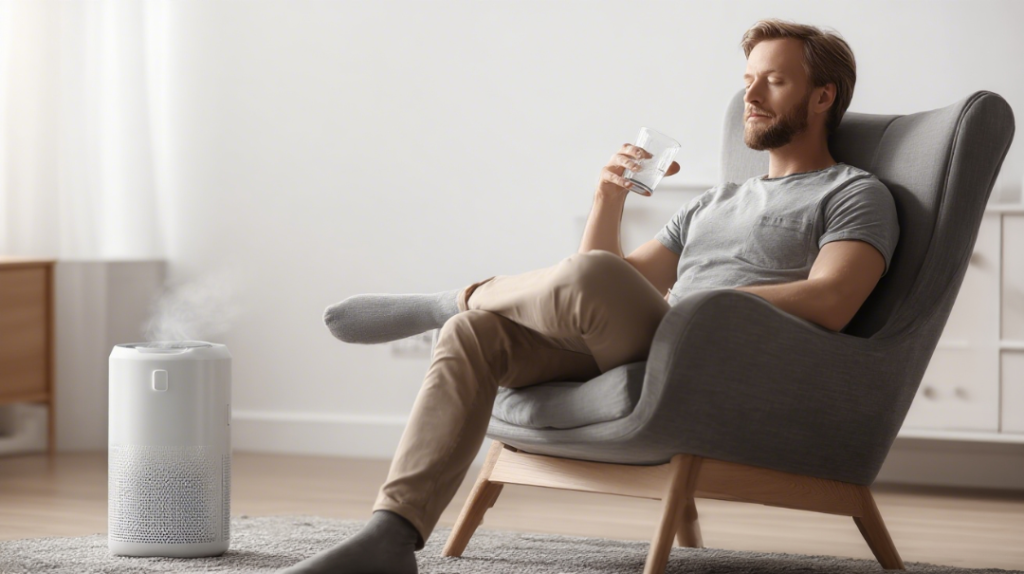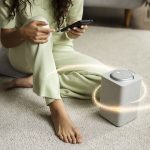Mold. That unwelcome guest in our homes. It thrives in damp, poorly ventilated spaces. Beyond unsightly stains and musty odors, mold spores can trigger allergies, asthma, and other respiratory issues. Understandably, homeowners seek solutions. Air purifiers are often promoted as a defense. But the critical question remains: Can an air cleaner really remove mold?
Understanding the Mold Threat
Mold reproduces by releasing microscopic spores into the air. Key facts:
- Spores are lightweight (1–30 microns) and easily airborne from disturbances like walking or air currents.
- Inhalation is the primary health risk (allergies, asthma).
- Mold also releases MVOCs (Microbial Volatile Organic Compounds), causing musty odors and irritation.
Because mold spores are part of what makes up indoor dust—especially in damp environments—many people ask: will an air purifier help with mold? To explore this, it’s helpful to understand how air purifiers remove mold and dust particles in the air, and what role HEPA filters play in effective mold control.
How Air Purifiers Tackle Mold Spores
Air purifiers draw air through internal filters. Effectiveness depends on the filter technology:
| Filter Type | Target | Result |
|---|---|---|
| True HEPA Filter | Airborne mold spores (1–30 microns) | Captures ≥99.97% of spores, reducing inhalation risk. |
| Activated Carbon | MVOCs (gaseous odors) | Adsorbs musty smells, improving air quality perception. |
- HEPA Filters: The Gold Standard
Certified True HEPA filters trap particles as small as 0.3 microns—ideal for most spores.
Result: Drastically reduces airborne spore counts. - Activated Carbon Filters: Odor Control
Porous carbon binds to mold-related gases (MVOCs).
Result: Neutralizes musty odors and reduces irritation.
Critical Limitations: What Air Purifiers Cannot Do
Manage expectations—air purifiers do not solve mold problems alone. They:
- Do NOT kill mold or stop growth on surfaces (walls, ducts, etc.).
- Do NOT fix moisture sources (leaks, humidity, poor ventilation).
- Do NOT clean surface mold (requires physical remediation).
- Have limited range (clean only the room they’re in, unless whole-house HVAC compatible).

Using an Air Purifier Effectively Alongside Remediation
Air purifiers excel as support tools when combined with:
- Professional Remediation
Use during cleanup to capture disturbed spores.
Seal the affected room; run industrial HEPA scrubbers or high-CADR purifiers. - Post-Remediation Maintenance
Capture lingering spores after source removal. - Prevention in High-Risk Areas
Use in damp spaces (e.g., basements) after improving ventilation. - Symptom Relief for Sensitive Individuals
Reduce spore levels in bedrooms/living areas for allergy/asthma sufferers.
Choosing the Right Air Purifier for Mold Concerns
Prioritize these features:
Key Features Checklist
- True HEPA certification (H13/H14; avoid “HEPA-like”).
- Substantial activated carbon bed (granules/pellets, not thin sheets).
- Proper sizing (match CADR to room size; oversize for better coverage).
- Airtight construction (prevents air bypassing filters).
- Regular filter replacements (follow manufacturer guidelines).
The HOKO Approach
At HOKO, we design air purifiers with:
- Certified True HEPA filters for spore capture.
- Deep-bed activated carbon filters for odor/VOC removal.
- Sealed systems ensuring air passes only through filters.
The Bottom Line: A Tool, Not a Magic Wand
Air purifiers can effectively capture airborne mold spores and help reduce musty odors in indoor spaces. This makes them a helpful tool for maintaining cleaner air, particularly in environments that are prone to dampness or have a history of mold.
However, an air purifier alone cannot solve mold problems. It does not remove visible mold or address the underlying causes such as leaks or high humidity. Lasting mold control still requires repairing moisture issues and thoroughly cleaning or professionally remediating contaminated surfaces.


